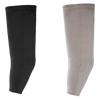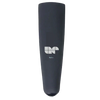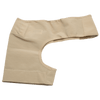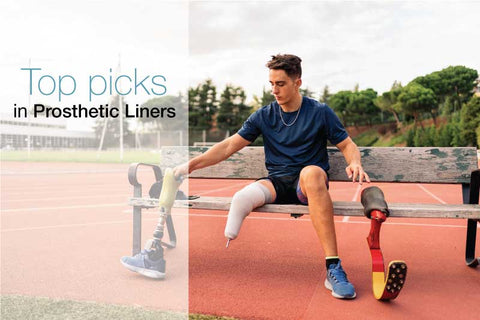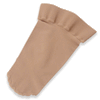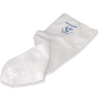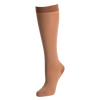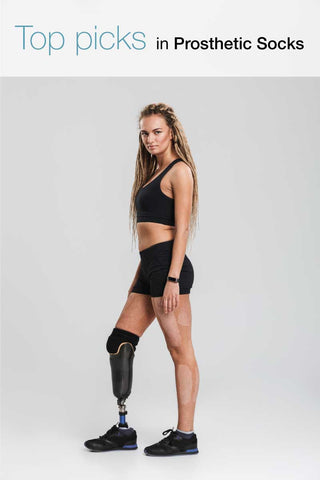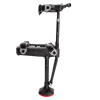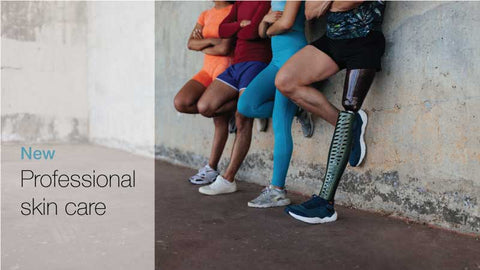Can New Data-Designed Prosthetic Sockets Make Walking More Comfortable?
Reading Time: 5 minutes
___
Summary:
-
Study tests data-designed sockets for below-knee amputees
-
Uses past socket data to generate faster, more consistent fits
-
Comfort levels matched traditional methods across 19 residual limbs
-
Could cut down fitting time while improving consistency
___
For individuals with a lower-limb amputation, one of the main ongoing challenges is obtaining a prosthetic socket that is stable, comfortable, and secure. Since the socket connects the residual limb to the prosthesis, it must effectively transmit load, fit snugly, and prevent skin or tissue irritation. Traditionally, achieving this fit has depended on highly skilled prosthetists, extensive trial-and-error, and often multiple fitting sessions.

A recent study led by Florence Mbithi and colleagues examines a new method: using data from previous socket designs to produce “evidence generated” (EG) sockets. Instead of designing each socket from scratch or relying solely on the prosthetist’s vision, the system begins with a digital “best guess” based on hundreds of earlier designs. The goal is to minimize the time spent on basic design, so clinicians can concentrate on fine-tuning and personalized adjustments.
What was done in the study
This research was conducted across three NHS clinics in the UK and involved 17 individuals who had undergone below-knee amputations. There were 19 residual limbs in total, as some participants had two amputations.
Each participant was fitted with two prosthetic sockets made from the same 3D scan of their residual limb. One socket was the “control” design, using the traditional plaster and computer-aided design and manufacturing (CAD/CAM) method under a prosthetist’s guidance. The other was an EG socket, created by using a database of 163 prior device designs, enabling the software to generate an initial socket shape for fabrication.
The study employed a crossover, non-inferiority design—aiming to show that EG sockets were not worse than conventional ones within a set comfort threshold, rather than being superior. Comfort was assessed using the “Socket Comfort Score” (SCS), and participants also completed semi-structured interviews to share their subjective experiences.
What the researchers found
In the comfort test, the EG sockets performed similarly to conventional sockets: median SCS was 8.6 for EG versus 8.8 for control sockets. The difference was statistically non-significant (P = 0.43; effect size = 0.05). Notably, EG sockets exhibited less variability in comfort scores among participants, with a 95% confidence interval of 8.0-9.0 compared to 7.5-9.5 for controls.
Participant interviews highlighted reflections on the fitting process, the similarities between the sockets, and how residual limb factors—such as shape, tissue sensitivity, and prior experience—influenced comfort. Many participants described both sockets as “stable,” “well-fitting,” and sometimes “very natural,” while also stressing the continued importance of expert clinician adjustments, particularly for sensitive areas.
What do the findings mean?
EG sockets created from a large database of previous designs can offer comfort comparable to that of a prosthetist-led CAD/CAM socket, especially during initial fittings. This indicates that using a “smart” design foundation does not seem to compromise comfort and might even lower fitting variability.
This has two key implications:
Time and efficiency: Starting with a well-matched digital template could allow prosthetists to spend less time on basic shaping and focus more on detailed customization or patient interaction.
Consistency: The reduced variability suggests that some users consistently achieve good fits, which may lead to more dependable outcomes and fewer follow-up visits or adjustments.
Caveats
-
While the findings sound promising, it’s important to note that the study demonstrates non-inferiority, not superiority. EG sockets were shown to be just as effective—not necessarily better—under the tested conditions.
-
The study also focused on fittings with initial check sockets at the time of fitting, rather than assessing long-term comfort in daily use over weeks or months.
-
The prosthetist continues to play a crucial role; interviews emphasized that clinician input remains valuable for local adjustments, patient preferences, and limb-specific anomalies.
-
The participant group was mostly male (16 out of 17), which may reduce the applicability of results to a broader population.
-
Since the EG socket was based on previous data, it likely performs best in typical limb shapes and settings. Complex or unique residual limbs may still require fully customizable designs.
Looking ahead
For future iterations of this approach, the study authors suggest integrating the EG-socket generation into CAD/CAM software. This would allow prosthetists to start with a digital template and then customize it to fit the individual’s limb and preferences.
Such a development could lead to significant changes for users and clinicians: reducing manual guesswork, enhancing the efficiency of digital tools, and potentially improving socket fit, comfort, and predictability.
However, since the fit remains individual, the human clinician’s role continues to be essential.
The bottom line
In summary, new data-designed prosthetic sockets (EG sockets) appear capable of providing comfort comparable to conventional clinician-designed sockets during early fittings. EG sockets offer the potential for quicker fittings and improved consistency.
However, the study highlights the continued importance of personalization, expert input, and long-term monitoring. For prosthesis users, the socket may feel a little more “right” from the start—but this improvement comes from both advanced software and human expertise, not software alone.
Related Reading:
How Standardized Prosthetic Socket Modifications Affect Comfort
Amputee Doctor’s Game-Changing Smart Prosthetic Socket Triumphs at Mayo Clinic’s Alligator Tank
Is A Motor-Driven Adaptive Prosthetic Socket Better for Below-Knee Limb Loss?
AI vs. Traditional Below-Knee Socket Plaster Casts—Which Design is the Best?

